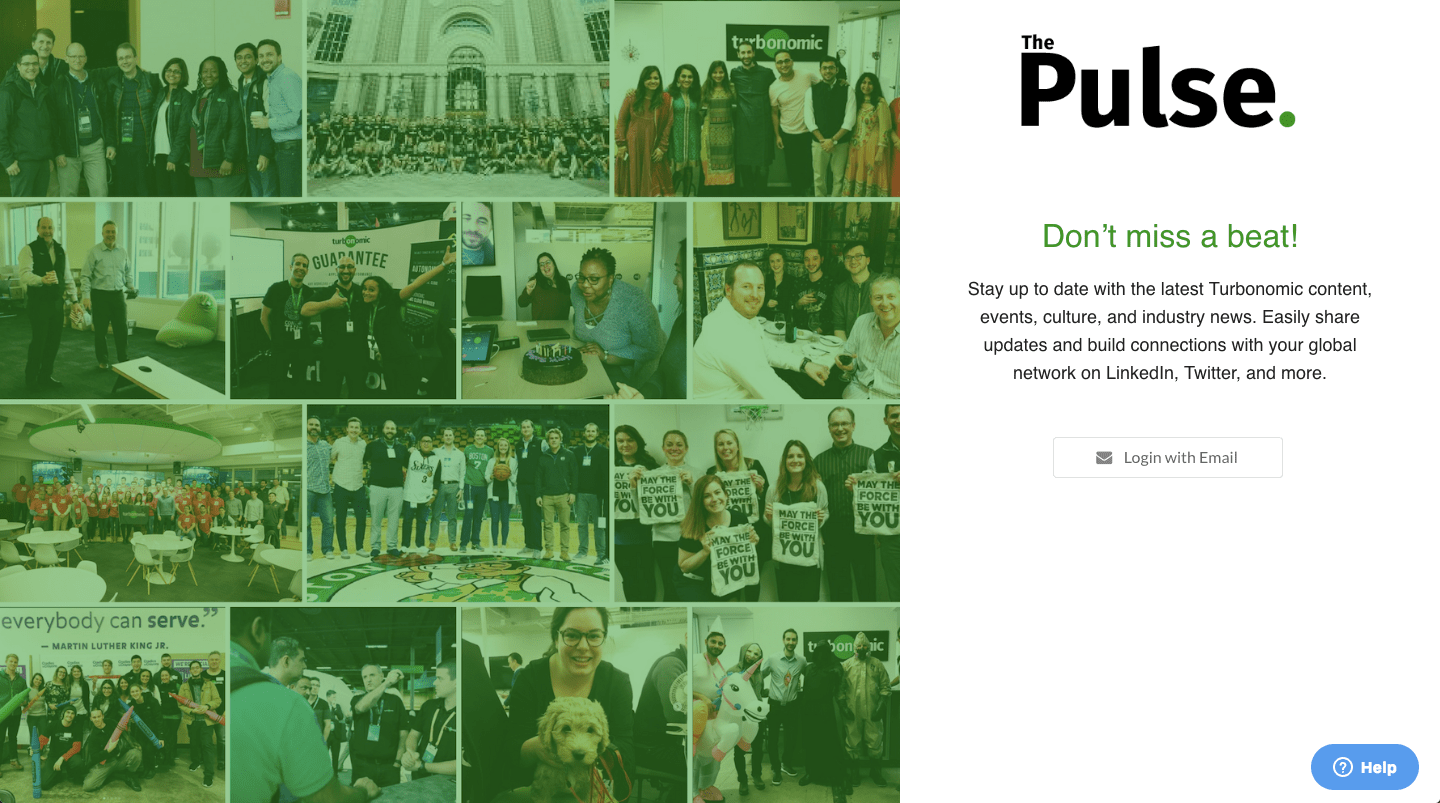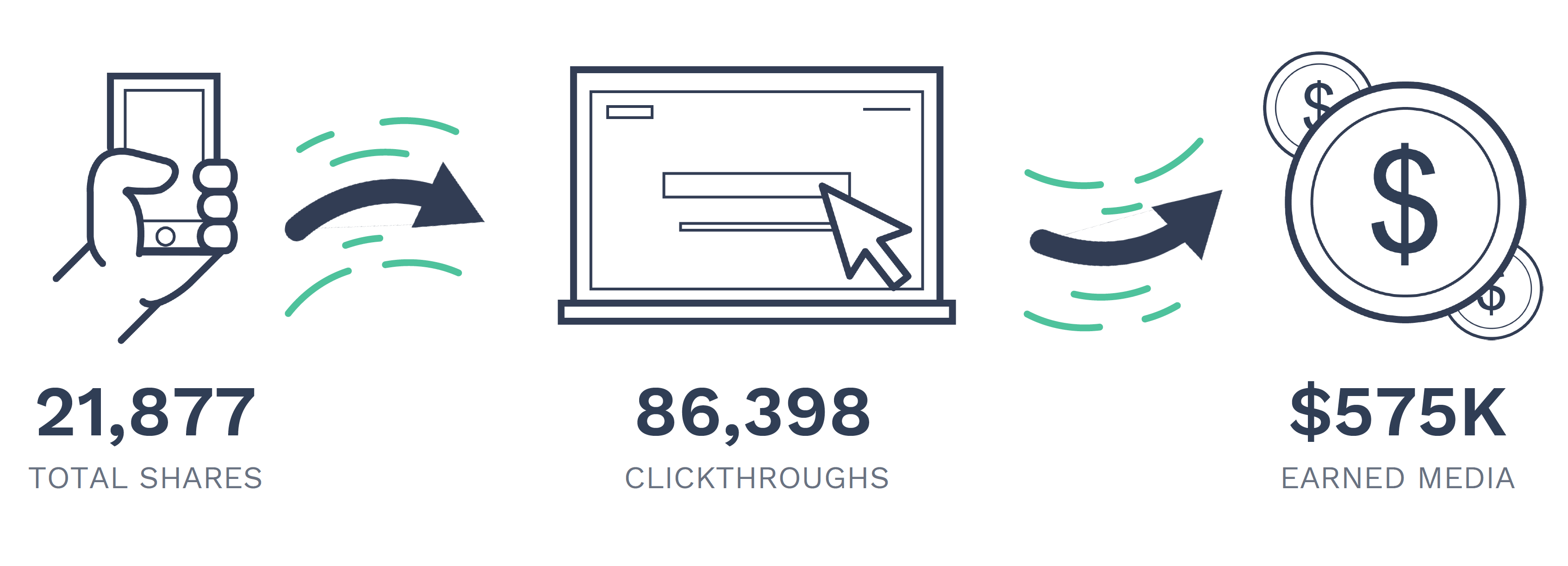Employee advocacy is one of the latest trending social media marketing terms. It has been popping up everywhere, but what is it exactly? Employee advocacy is any promotion of a brand – it’s image, vision, and messages – through its employees. Employee advocacy has been happening for a long time, but the rise of social media has created a new medium for brands to both easily promote and accurately track its success.
67% of Americans use social media as a primary source for news and information. They also spend almost two hours a day engaging and scrolling through various social media platforms. This growth and normalization has changed the way we use these platforms. It’s no longer just about connecting with friends; people now use these platforms to research and engage with brands.
Employee advocacy through social media has gained popularity because it helps organizations get their content and message out to a wider and more engaged audience. Leveraging the networks of employees broadens reach and helps brands connect to like-minded individuals that were just beyond the reach of branded social media channels.
Employee advocacy can encompass a lot of different things. For most organizations, sending internal e-newsletters with social share buttons is usually the first step and often progresses to a full formalized program with strategy, training, support, reporting and specified software.
There are many benefits that employee advocacy programs can help achieve:
- Leveraging your employee’s social networks can help greatly improve talent acquisition, support employer branding and recruit passive candidates.
- Employees sharing branded content can significantly increase a brand’s SOV (Share of Voice) and help generate new leads and potential customers.
- Providing employees with relevant industry content helps to build their thought leadership which in turn builds the credibility of your brand.
Three Ways Companies Are Leveraging Employee Advocacy
Brand Recognition and Trust
We live in a world full of choices. Information is widely available and at our fingertips, the accuracy of this information, however, can sometimes be questionable. Currently, only 55% of consumers consider branded marketing materials to be credible sources of information. A lot of customers tune out ads or use ad blockers to filter out messages they deem as untrustworthy or inauthentic.
People, however still trust marketing messages from those they are connected with. Leveraging the genuine voices of employees to share branded messages instantly adds credibility as there is an inherent level of trust already built. Also, the total collective number of all social media followers from your employees will most often dwarf that of your branded channels. In addition to a wider audience, these messages generally are more engaged with as they are not seen as “ad spam.”
One great example of building brand recognition is Turbonomic, a fast-growing company that was struggling with limited social media reach. With only a limited reach on their corporate social media channels, they were looking for new ways to amplify their social media efforts.
As a fast-growing technology company, it also had other challenges:
- Constantly hiring new employees lead to some inconsistent messaging and it was proving difficult to get all employees on the same page when it came to brand messaging.
- These quick growing teams were also dispersed and relying on old wikis, content repositories, and emails to source content; a lot of which was outdated.
Turbonomic needed a simple way to improve social media reach and create brand consistency throughout the entire organization. To achieve these goals, they partnered with PostBeyond and decided their best KPI to measure success was the percentage of employees sharing content within one quarter. If they could launch the program with a high percentage of employees sharing content then they knew earned media value and website traffic would also increase.
After launching an employee advocacy program (they named The Pulse) Turbonomic was able to onboard their entire organization. Within 90 days, they exceeded their goal of users sharing by 80% and they generated over 5,600 total shares with almost 5X the engagement per post.

Multiple Department Program (Benefits for Marketing, HR, and Sales)
Most initiatives only benefit one department, employee advocacy, however, can affect marketing, sales, and HR. In addition to marketing benefits such as brand recognition, increased share of voice and trust within the market (mentioned above), employee advocacy can also help to increase sales and improve the recruitment process.
Sales teams need access to company content to create brand awareness and start conversations with prospects. It’s also crucial for them to be active on social, as this is likely the first interaction customers will have with a brand.
One leading financial services firm had a client-facing team of over 500 advisors. Their team’s main responsibility was to engage their clients, build relationships and attract new business. However, they could only meet with their clients once a year. This caused a difficulty staying stay top of mind with customers and interacting with prospects.
77% of B2B buyers said they do not engage with a salesperson until after they’ve performed independent online research. This was no different for this company; many of their customers preferred to access information and find their own investment advice online first and their employees were struggling to connect with these prospects and provide thought leadership necessary to engage. The answer to their challenge was to explore social media employee advocacy.
After implementing an employee advocacy program with PostBeyond, their financial services advisors noticed an increase in ease and success when reaching out to prospects on social media. This increased success and ability to showcase branded thought leadership content resulted in an increase in leads generated.

The collective reach of their employees was 40x higher than all their branded channels combined. Their leadership team also joined in – most notably, their CEO. By posting content through the PostBeyond platform he was able to grow his network by 300+ followers (all organically).
More Engaged Employees
According to Glassdoor, 79% of job applicants use social media in their job search. And 69% of applicants will not take a job, even if they are unemployed if the company has a bad reputation. Happy and engaged employees are essential for organizations to thrive.
A strong culture acts as the glue to keep the organization together and employees loyal to the brand. Employee advocacy helps promote culture by giving employees more insight into what is happening amongst the various department within the organization.
With almost 86% of employees who participate in an employee advocacy program citing the increased social presence having a positive impact on their career, it was a no-brainer for Starbucks to look to employee advocacy to help promote their employer brand and further improve their recruitment efforts.
Starbucks has the goal to sit at the same table of employment with brands such as Facebook and Google. With employee advocacy and PostBeyond, Starbucks talent recruiters looked to gain a competitive edge for engaging top talent. Their teams could now streamline communications and empower their recruitment team with easy access to branded content.
With employee advocacy Starbucks was able to:
- Further amplify their employer brand messages
- Enable social recruiting and referrals
- Centralize all branded content in one library
- Easily measure engagement and impact
Looking to get started? Here are three ways to dive into the world of employee advocacy:
1. Social Media Policy Development Revamp
Social media policies help to mitigate risk by providing all employees and executives with guidance and best practices when it comes to sharing the company’s brand on social media platforms.
PostBeyond has created this guide to plan or redesign an employee social media advocacy policy for your organization.
2. Training Employees
Social media skills will vary depending on age and department. Baby boomers will stereotypically need more tactical platform training whereas millennials will need more guidance on what they should and shouldn’t say. Same goes for different departments. Compliance teams will be acutely aware of what they can legally say, marketing and sales will know how to stay on-brand, every department will have strengths and weaknesses that need guidance.
Download our handy one-page Social Media Cheat Sheet to help guide employees on which content works best for each social medium.
3. Leadership Buy-in
Why is this number three? After launching many programs, PostBeyond has noticed this one factor is what separates the average program from the superstar. Why? Because leaders help give validity to the program. When CEOs and presidents enthusiastically participate in an employee advocacy program they set the tone and provide an example causing adoption rates to flourish. The more employees who participate, the more the program grows.
Learn how to secure leadership buy-in for your employee advocacy program.




